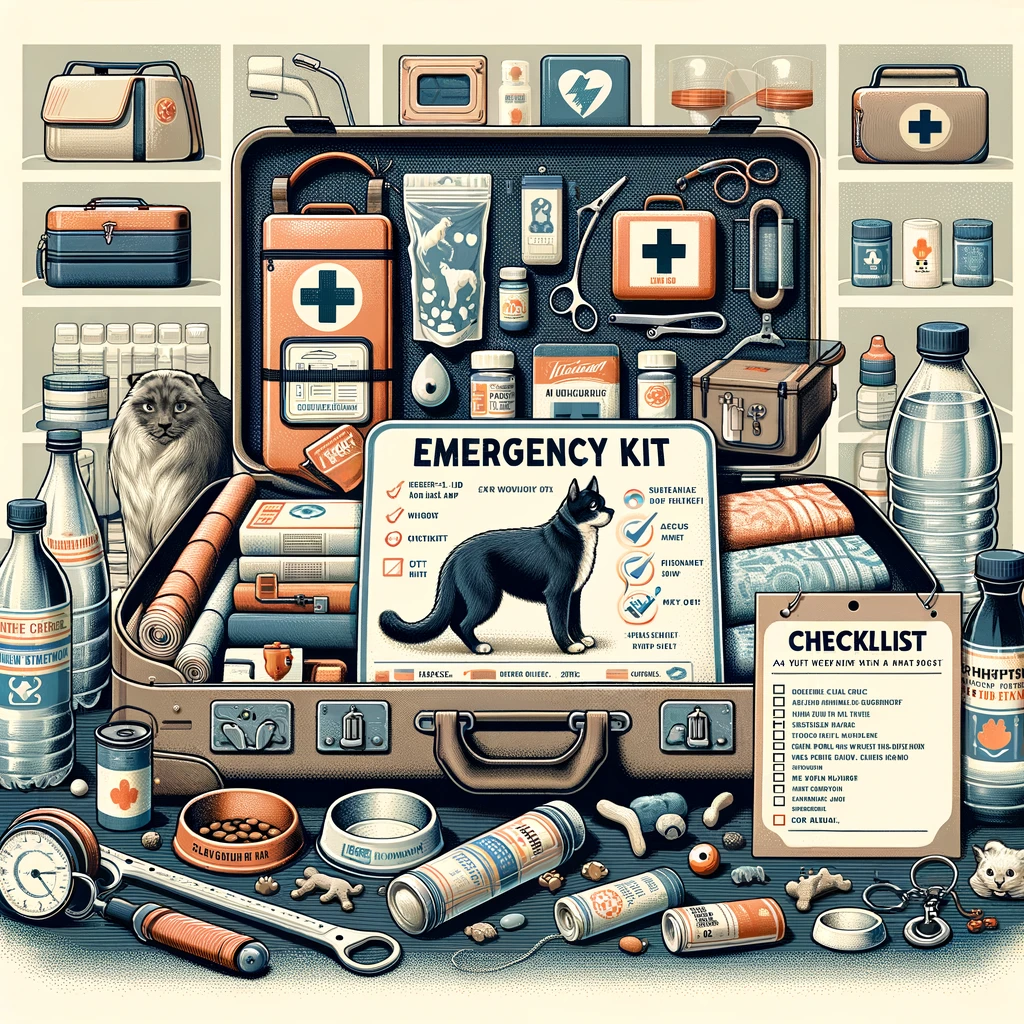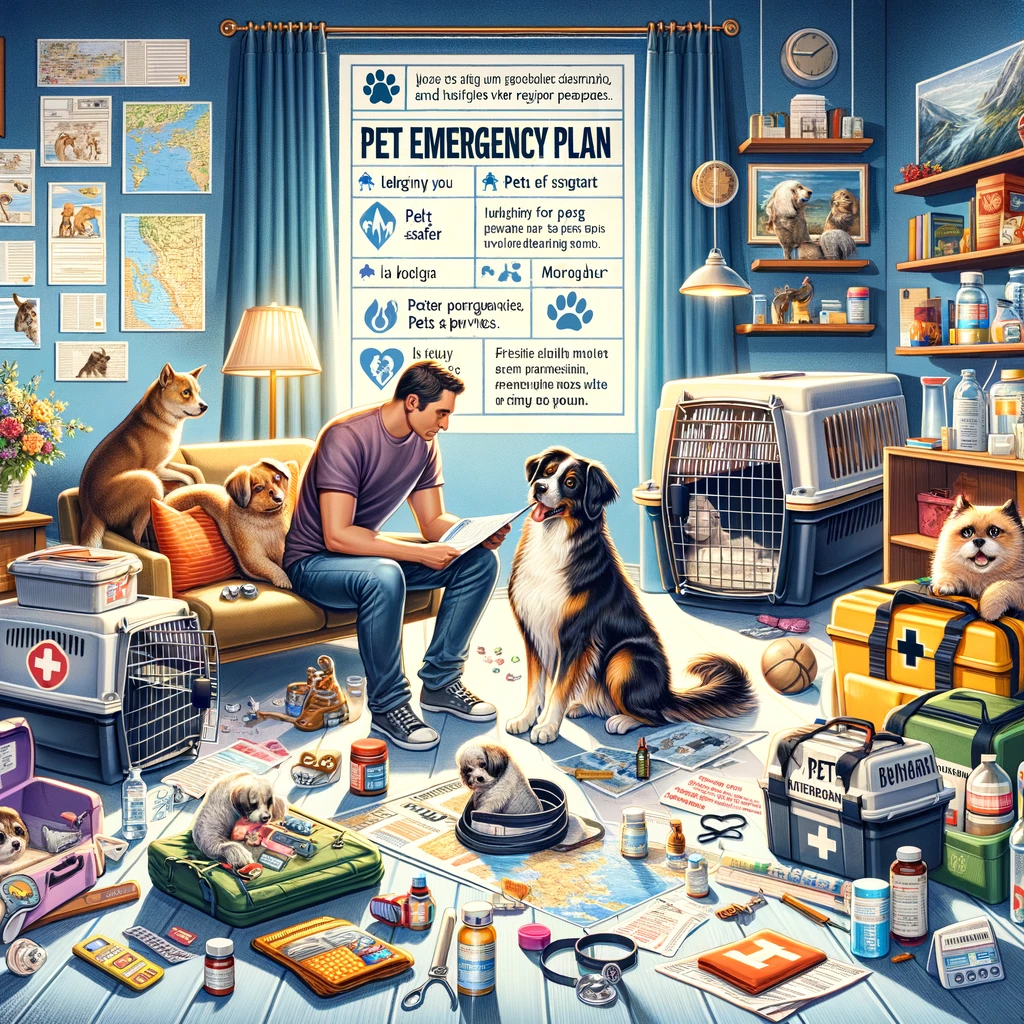When disaster strikes, the safety and well-being of our pets are paramount. Just as we prepare emergency kits for ourselves and our families, it’s crucial to consider the needs of our furry, feathered, or scaled friends. This comprehensive guide covers everything you need to know about pet survival preparedness, from creating a pet emergency kit to understanding pets’ specific needs during different types of emergencies.
The Importance of Pet Preparedness
Emergencies can range from natural disasters like earthquakes, hurricanes, and floods, to human-made crises such as chemical spills or power outages. In these situations, the chaos and unpredictability can make it difficult to ensure the safety of pets without prior planning. Preparedness not only saves lives but also helps to alleviate the stress and anxiety that come with emergency situations.
Creating a Pet Emergency Kit

An essential step in pet preparedness is assembling a pet emergency kit. This kit should be easily accessible and clearly labeled, containing all necessary items your pet might need during a disaster. Key components include:
- Food and Water: A minimum three-day supply of pet food and water in airtight, waterproof containers.
- Medications and Medical Records: Store medications and copies of your pet’s medical records in a waterproof container. Include information on feeding schedules, medical conditions, and vet contact details.
- Identification: Ensure your pet has a collar with ID tags including your contact information. Microchipping your pet is also advisable as it increases the chances of reunion if you get separated.
- Carrier or Leash: Have a sturdy carrier or leash on hand for safe transport. This is crucial for pets’ safety and for emergency personnel who might need to assist you.
- Sanitation Supplies: Include litter, litter box, newspapers, paper towels, plastic trash bags, and household chlorine bleach for sanitation.
- Comfort Items: Familiar items like toys, blankets, or treats can help reduce stress for your pet.
Understanding Your Pet’s Needs During Different Emergencies
Different emergencies pose unique challenges for pet care. Here’s how to address your pet’s needs in various scenarios:
Natural Disasters
- Evacuation: Know in advance if your local shelter accepts pets or if there are pet-friendly accommodations nearby.
- Sheltering in Place: Identify a safe area in your home where you and your pets can stay together. Make sure it’s free from hazards and has access to water.
Extreme Weather Conditions

- Heatwaves: Ensure your pets have access to shade and plenty of water. Never leave pets in a parked car.
- Cold Weather: Pets are susceptible to frostbite and hypothermia. Keep them indoors if possible and provide warm bedding.
Human-Made Hazards
- Chemical Spills: Keep pets away from contaminated areas. Follow local authorities’ advice on sheltering or evacuation procedures.
- Power Outages: Maintain a comfortable environment for your pets. Consider their needs for warmth or cooling during extended outages.
Training and Behavior Preparedness
Training your pet for emergency situations can significantly improve their chances of survival and reduce stress. Teach your pet basic commands and practice evacuating or sheltering in place. Familiarize them with their carrier or leash to minimize panic during an actual emergency.
Planning for Evacuation

Evacuation can be the most unpredictable aspect of an emergency. Plan multiple escape routes and identify pet-friendly shelters or accommodations in advance. Keep your pet emergency kit and carriers readily accessible, and practice loading your pets into their carriers or vehicles to reduce panic and save time during an actual evacuation.
After the Emergency: Returning Home Safely
Once the immediate danger has passed, returning home with your pet requires caution. Assess your home for hazards such as broken glass, toxic spills, or structural damage before allowing your pets to return. Monitor your pets closely for stress-related behavior or health issues in the aftermath of the emergency.
Community and Support Networks
Building a support network with neighbors, friends, or local pet owners can provide additional resources and assistance during emergencies. Exchange information and plan how you can help each other’s pets in case of evacuation or if someone is not home during an emergency.
Conclusion
Pet survival preparedness is an ongoing process that requires attention and updates as your situation or environment changes. By taking proactive steps to ensure your pets’ safety, you’re not only protecting your beloved animals but also helping to maintain your peace of mind during challenging times. Remember, the time to prepare is now—waiting until an emergency strikes could be too late for you and your pet.
This guide has aimed to provide a thorough overview of how to prepare for your pets’ survival during emergencies. By following these detailed instructions and tips, you can create a safer environment for your pets, no matter what the future holds.


0 Comments